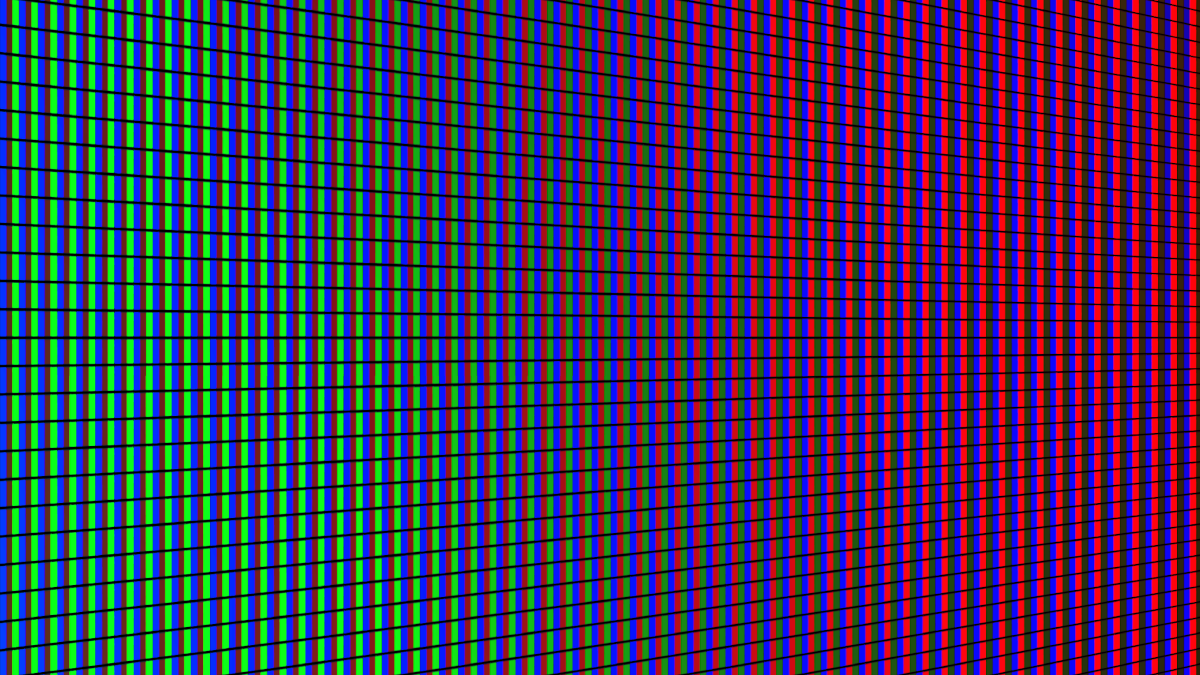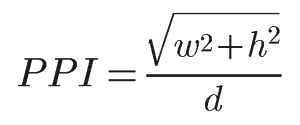Quick Links
If you're buying a computer monitor or smartphone, you might see the term "pixel density" used in the marketing materials. Measured in pixels-per-inch (PPI), pixel density is closely related to perceived image quality so understanding this measurement can help you make a better choice.
Is Higher Pixel Density Always Better?
Pixel density refers directly to the number of pixels in a given area. Pixel density is generally measured in pixels-per-inch (PPI) on account of screen sizes also being sold in inches, but pixels-per-centimeter (PPCM) is sometimes used, too.
The higher the pixel density, the harder it is to distinguish individual pixels with the naked eye. Some devices have a much higher pixel density than others, for example, the iPhone 12 has a pixel density of 460ppi, which means that for every square inch of the display there are 460 pixels.
Compare this with a 55-inch 4K television, which has a pixel density of only 80.11ppi. It is much easier to distinguish individual pixels on a TV, with pixels on an iPhone 12 being difficult or impossible to make out even if you're holding the display very close to your face.
Pixel density is something you should keep in mind, particularly if you've gotten used to a device with a large number of pixels per inch. For example, if you're moving from a 15" laptop display to a larger desktop monitor, understanding how resolution and screen size affect pixel density will ensure you aren't disappointed by the comparatively lower pixel density of large desktop monitors.
Calculate Pixel Density Yourself
To calculate pixel density in PPI you need two measurements: the screen resolution (both width and height) and the diagonal size in inches. First, you need to work out the diagonal width in pixels by squaring the height and width, adding the two numbers together, and taking the square root.
From here you can divide the diagonal length in pixels by the diagonal length in inches to get the pixel density in PPI. This can be expressed as the following mathematical formula, where w is width, h is height, and d is diagonal screen size in inches:
If breaking out the calculator seems like too much work, you can also use online tools to perform this calculation for you like CalculatorSoup, Omni Calculator, and King's Calculator.
To calculate any of these pixel densities in metric measurements, convert inches to centimeters and you'll get the PPCM measurement instead.
Viewing Distance Is Important, Too
Viewing distance makes a huge difference when it comes to pixel density. While a 4K television has a much lower pixel density than a smartphone, at the typical viewing distance the perceived effect is the same. You should only compare like-for-like when it comes to pixel density. Comparing one smartphone to another is an example.
Though an important metric, pixel density is only one measurement of image quality. Other important factors include the type of display panel you choose, contrast ratio, and peak brightness output.



